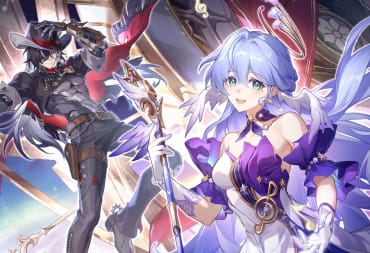Alternate history is a fascinating concept: It speaks to us in both our interest in what came before and to our love to ask "what if."
It’s this combination, along with some absolutely amazing artistic skills and thought, that has led to the prominence of Jakob Rozalski and the spread of the World of 1920+. He looked at the period of history that fascinated him most, the beginning of the twentieth century and in particular two main parts that people don’t know much about: the Battle of Warsaw and the Polish-Soviet war. He combined that with an interest in giant robots, rural atmosphere, and his artistic skill to create a visually stunning take on alternate history.
These would lead to Scythe, a successful award-winning board game that we at TechRaptor have gushed about before by Stonemeier Games and was developed in tandem with Jakob. The success of Scythe led to many others taking note of his work and approaching him for projects, and this was what ultimately led to the beginnings of Iron Harvest.
King Art Games is no giant company but has become well-established with numerous successes. From the whimsical adventure games of The Book of Unwritten Tales, to the science fiction turn-based strategy of Battle World Kronos, and all the way over to the fantasy RPG The Dwarves, King Art has tackled a variety of genres. When talking with a member of the team, he explained how they came to work on Iron Harvest and the 1920+ setting:
After releasing the turn-based strategy game Battle Worlds: Kronos and our realtime-combat gameplay in The Dwarves, we wanted to combine our experience and take the next consequent step to real-time strategy. We have developers in our team who are crazy Company of Heroes fans and/or spent nights and days on playing Warcraft 3. Those classic real-time strategy games are what we missed in the past years and we really want to scratch that itch.So we developed concepts for RTS games and that was about the time when Jakub's World of 1920+ started to get popular. As we are very experienced in story-driven games, we wanted to focus on interesting characters and units right from the beginning and Jakubs artworks and world was a perfect match. So we reached out to him and the rest is history.
Jakub in an interview with Wertn shared how the project came to be on his side:
After the spectacular success of the Scythe. I received many proposals from different studios from around the world. I decided to work with King Art Studio, because I like their philosophy and approach to game development, and the quality of their products. They are not so big, to have to be guided only by accounting and profits. But they are big enough and experienced, to create a great, highest quality product. What they proved many times. I also wanted to have a real influence on the creation process of the game. King Art Studio gave me that opportunity.I am very happy of our cooperation and I’m sure that the Iron Harvest will be a unique & awesome game! I’m very excited about this project. Video games have been a very important part of my life since the early nineties, so this is like another dream come true. Definitely the plan is to add a new art book to the physical edition of the game.
Thus the key players to create Iron Harvest were all in place: King Art Studios as the developers and Jakob Rozalski as the setting creator and artist, along with the genre choice of real-time strategy. While once one of the most prominent genres, over the last decade the RTS has seen relatively few releases, instead seeing its spinoff child MOBA taking all the glory. Starcraft 2 is still around and is the cornerstone of the remaining RTS community along with the hybrid RTS-TBS Total War series. Some independent games have attempted to fill that gap, typically to middling success with Grey Goo,and Petroglyph's 8-Bit series of RTSes being two examples.
One reason many speculate on the declining popularity of the Real-Time Strategy genre is the complexity that takes a lot to learn and having to apply that knowledge in split-second decisions. Micromanaging a whole bunch of things and constantly maximizing your clicks were hallmarks of parts of the genre, with the term "clicks per second" coming into usage to discuss that. Speaking with King Art, they shared some of their design ethos and goals for Iron Harvest:
It returns to the roots of the RTS genre. Planning is more important than clicks per second and you have the time to come up with a plan in an open, sandbox leveldesign so every match can be totally different, depending on your or the opponents strategies. We use easy-to-learn mechanics like cover and armour to make the units interesting and unique, but not too complicated. And most importantly: Iron Harvest will feature an epic player campaign features a mature story, told from the perspective of the three different factions.
A player campaign feature is something that many of those smaller RTS games tend to push down its list of things to do, instead prioritizing other segments. In the 90s, RTS’ were known for their stories often enough, with examples ranging from the popcorn cheese of Command and Conquer, to the racial politics of Warcraft, or the science fiction of Homeworld.
Narratively, they haven’t revealed that much at this point. What we do know, is that years after The Great War (aka World War 1), there are secret forces working on destabilizing Europe and creating a world at war where they can seize control. There are three main factions as mentioned above: The Polania Republic, Rusviet, and The Saxony Empire, and their campaigns are structured to create one overarching story, much like in Warcraft 3.
One key mechanic in Iron Harvest is the destructible environment. This matches perfectly with the sandbox level design and the types of mechs and robots in the game. It’s one of the core ideas of the game that you be able to manipulate the battle by impacting the environment and cover in the area. They elaborated a bit on it with us:
The destructible buildings and cover are clearly part of the game design and affects the outcome of every battle. Thanks to modern computers and console generation, we can instantly update pathfinding and show stunning visuals. And by the way, its hell of a fun to walk with a mech straight through a building to flank the opponent.
Another mechanic that appears in the game is base building. Based on ideas from Company of Heroes, you’ll be able to either build bases from the ground up or have conquered already existing buildings. Earlier this year, they mentioned that they are also working on a modular fortification and trench system.

The World of 1920+ is one that interests King Arts greatly, and with it they want to expand Iron Harvest after release with more campaigns, factions, and units to further explore the setting. They even said they’d be interested in exploring ideas like a mech battle game or other gameplay concepts because there’s so much to tell with the World of 1920+.
So now that you know about Iron Harvest – what is its state? It’s been in the works since late 2016 and self-funded by King Art Games. However, to help it reach the finish, they are needing community support on Kickstarter and are seeking to raise $450 000 over the next 31 days and stretch goals for it include co-op play and competitive multiplayer modes.
If you are interested, it's worth knowing as well that King Art Games does have a good track record with crowdfunding games. all of Battle Worlds Kronos, The Book of Unwritten Tales 2, and The Dwarves were completed and delivered relatively close to their estimated date.
Have a tip, or want to point out something we missed? Leave a Comment or e-mail us at tips@techraptor.net













